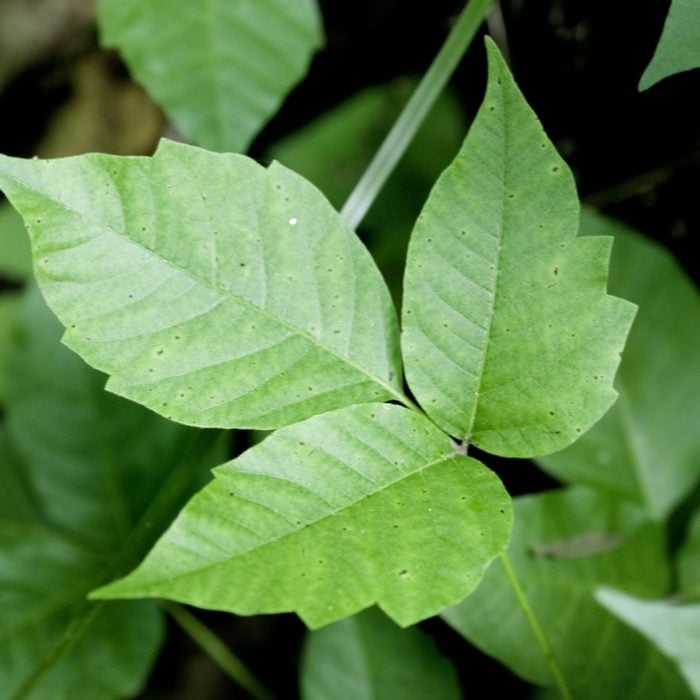
Poison Ivy
Leaflets three, let it be. Good advice for the majority of people who are allergic to these invasive plants. Some harmless plants are mistaken for poison ivy (young box elder seedlings, for instance), but you’ll know for sure if you develop an itchy rash after coming in contact with the sap, which contains urushiol. Poison ivy (Toxicodendron radicans) and the related poison oak (Toxicodendron diversilobum) spread not only by underground runners but also by seeds dispersed by birds. Treat with an herbicide labeled for poison ivy. Or wear protective clothing and disposable gloves and dig it up by hand, discarding with the trash. Once you’ve learned to recognize poison ivy, check out these other healthy summer tips.
Editor’s Tip: Plants can help you set up the right environment for your home. Try these last chores of the season that will set up your lawn and garden for optimal success when the warmth of spring returns. Here’s how to winterize a yard.
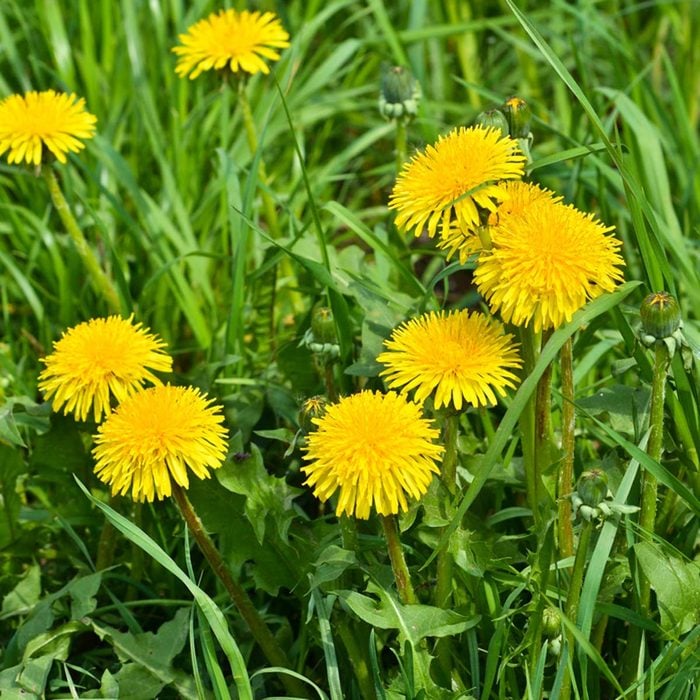
Dandelions
Dandelion (Taraxacum officinale) is an ornamental weed. That’s right, ornamental. But those golden yellow blooms quickly turn to fluffy seedheads that disperse in the wind (or with the breath of a giddy toddler blowing the seeds into the air). Before you know it, you’ve got a field of these invasive plants where once grew a promising lawn. It should be noted that young dandelions (on non-treated lawns only, please) are actually a nutritious addition to spring salads, adding a touch of bitterness for more character. You can remove the plants by hand with a forked dandelion weeder or spot spray with a broadleaf herbicide. Did you know you can cook with dandelions?
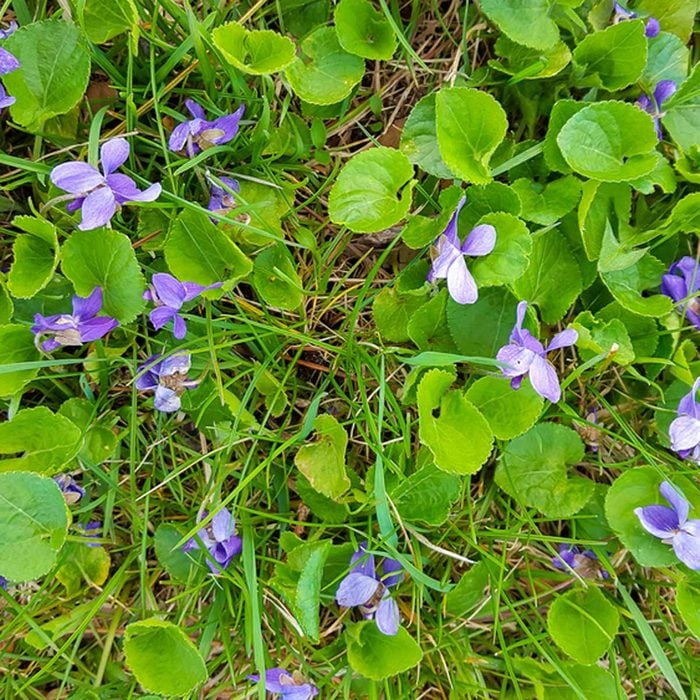
Violets
Sometimes a “weed” is not necessarily a weed. Such is the case with wild violets (Viola sororia), which are a fine addition to a naturalistic garden. Mass them in woodland and wildflower gardens and enjoy. They even grow contentedly beneath black walnut trees. Although they don’t spread by underground root structures, wild violets do freely self-seed to the point of behaving as invasive plants in the lawn. In that case, remove by hand or spot spray with broadleaf herbicide.
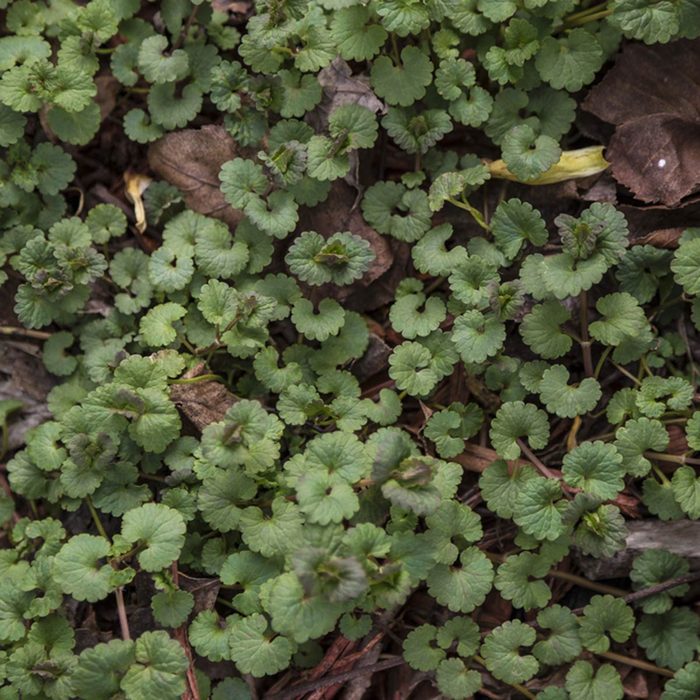
Creeping Charlie
Creeping Charlie (Glechoma hederacea) makes one heckuva groundcover—thick, tough, adaptable to sun or shade, and it even has violet-purple flowers in late spring. Oh, did we mention vigorous? That’s the problem, really. Creeping Charlie, also known as ground ivy, runs roughshod through the garden, forming a dense mat and smothering other plants. You can dig it up, but don’t try to compost it because the stem fragments can re-root. You can also treat these invasive plants with a broadleaf herbicide, but you may need to make several applications over the course of several weeks. Mulching garden beds is also a good solution.
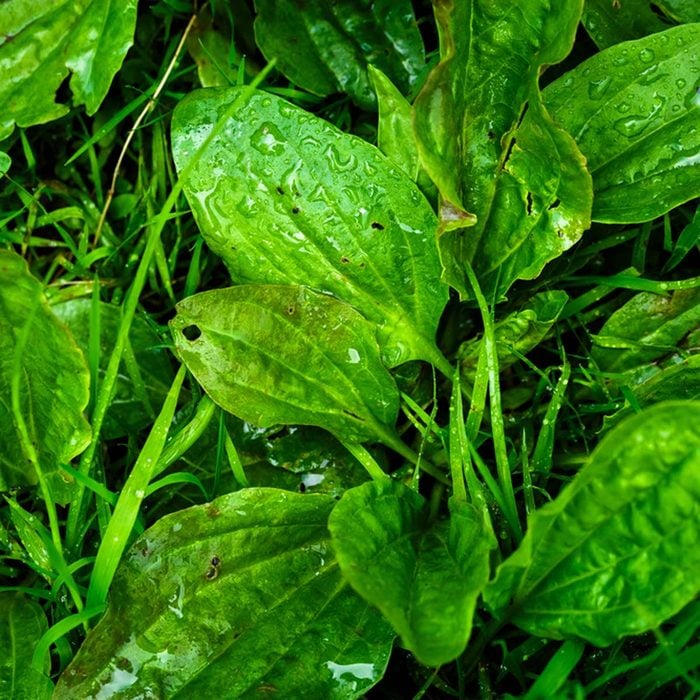
Plantain
If you search for “plantain weed,” you’ll quickly discover that this very common garden weed is actually a medicinal herb, used for everything from treating acne to taming gastrointestinal distress. It often shows up in neglected lawns, usually in shady, moist areas. The good news is, plantain (Plantago major) is easy to dig up with a trowel or dandelion weeder. Tip: It’s easiest to pull weeds when the soil is moist.
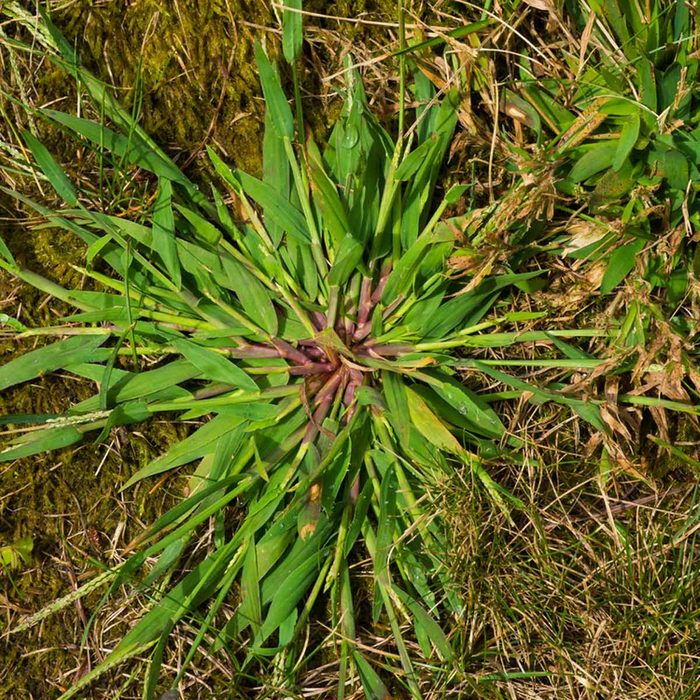
Crabgrass
Crabgrass (Digitaria spp.) is another invasive plant that’s easy to remove by hand. Trouble is, if it gets established in your lawn, that could mean a lot of hand-weeding. Crabgrass is most noticeable in the heat of summer, as it remains green and vibrant-looking even in drought. Unfortunately, that just makes a drought-stressed lawn look worse. You can treat with a pre-emergent herbicide in spring, or spot-treat with a nonselective herbicide during the growing season, being careful not to hurt surrounding grass. Always apply on a calm day.
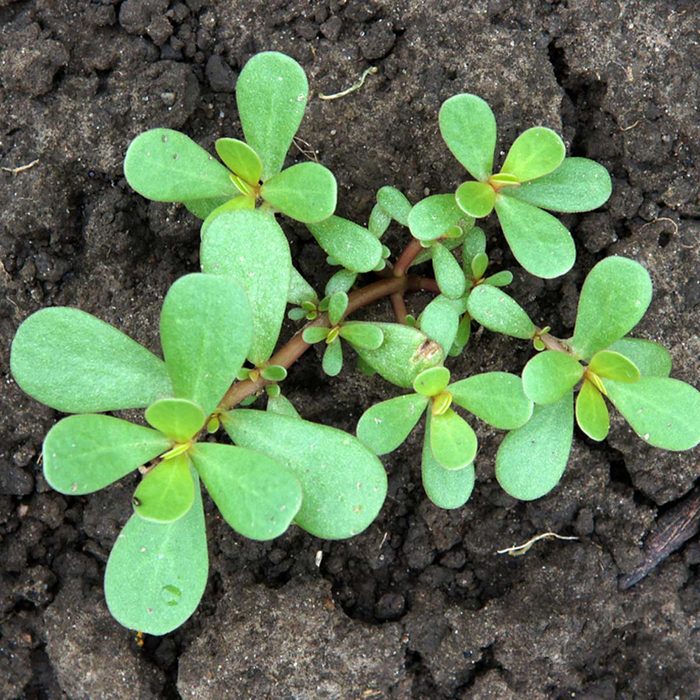
Common Purslane
Common purslane (Portulaca oleracia) is a broadleaf annual with fleshy, succulent leaves that give it extra protection in hot, sunny conditions. Common purslane sneers at dry weather, so it does what nature intended it to do: cover bare earth needing protection. Unlike its ornamental cousin, common purslane’s flowers are too small to make much impact, so gardeners are quick to remove it. You can hand-pull plants or keep beds mulched. In the lawn, treat with a pre-emergent herbicide in spring or a broadleaf herbicide during the growing season. Psst! These secret ingredients can help your garden grow.
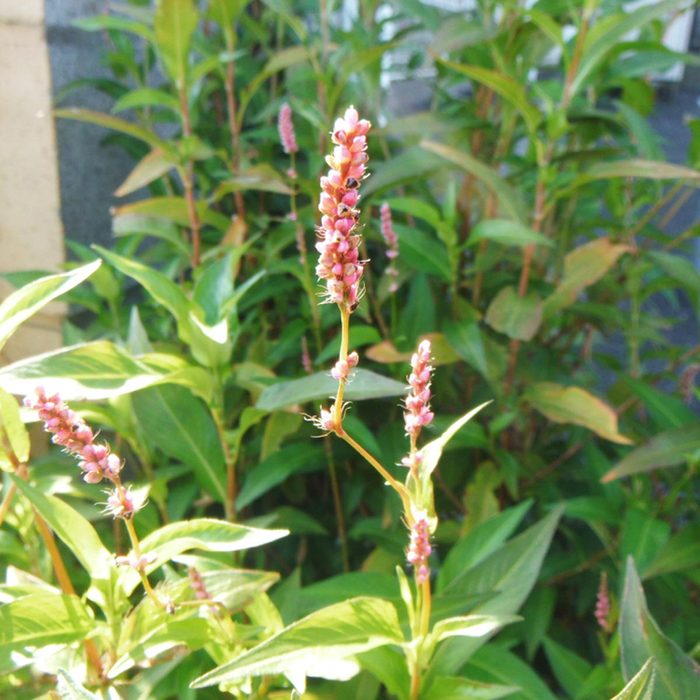
Smartweed
Smartweed (Polygonum spp.) grows over three feet tall so it’s not apt to be overlooked in the garden. The modest pink or white flowers are not showy enough to warrant a place in most gardens, so remove by hand or treat with a post-emergent herbicide. One thing to note: smartweed does have wildlife value—its seeds are eaten by songbirds. These are the best foods to attract birds to your backyard.
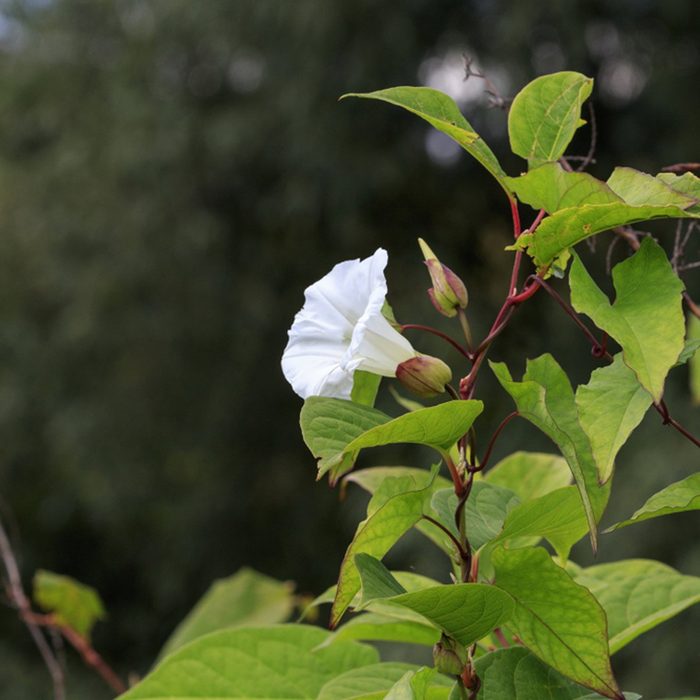
Field Bindweed
The weedy relative of morning glory, field bindweed (Convolvulus arvensis) is a climbing or creeping perennial that reproduces through both seeds and roots. Seeds can remain viable in the soil for 20 years. And even a small fragment of root can result in a new plant, so hand-pulling is not an option for these invasive plants unless you do it repeatedly until the remaining roots use up their reserves. Treat existing plants with a post-emergent herbicide. Prevent seeds from germinating with a mulch or a pre-emergent herbicide.
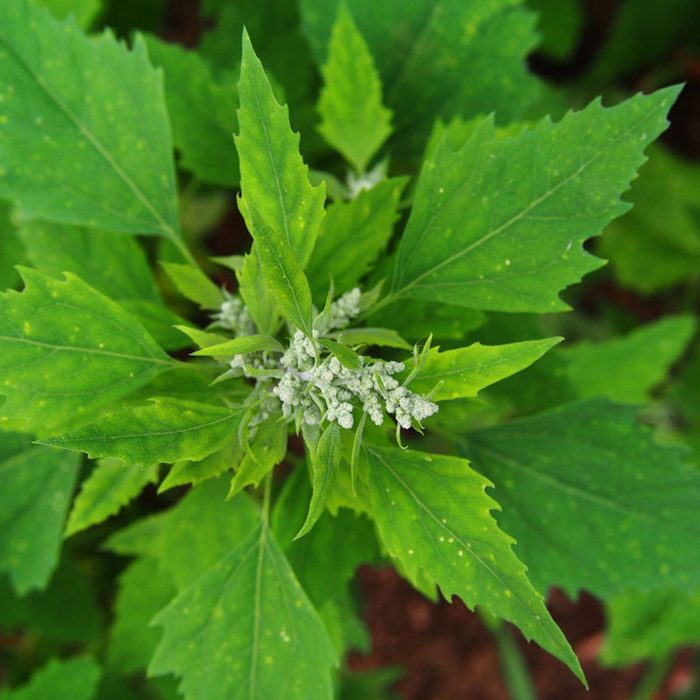
Lamb’s Quarters
Young lamb’s quarters leaves are sometimes added to salads or soups, so a chef might object to the word “weed.” However, there is little ornamental value to these plants, so those with strictly ornamental gardens need not put up with them. Lamb’s quarters (Chenopodium album) are exceedingly easy to remove by hand when young. Just grasp the stem close to the ground and pull upwards. If you wait until they’re 4 feet tall, however, a shovel may be needed.
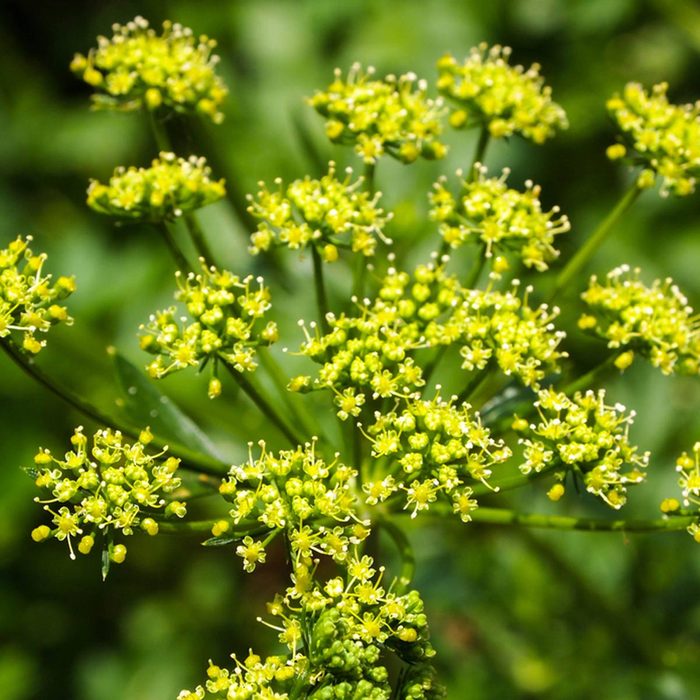
Wild Parsnip
Wild parsnip (Pastinaca sativa) is a particularly dangerous invasive species because it can create a serious rash and blistering. The sap of the wild parsnip is toxic and the plant is difficult to eradicate. It can remain viable in the soil for four years. Eradicating the plant involves mowing or cutting for several years until the seedbank is exhausted. But mowing has to be done early in the growing season and all equipment must be washed thoroughly because mowers can spread it. Chemical control is another route and spraying can be done in the spring and late fall. That method also requires several years of treatment.
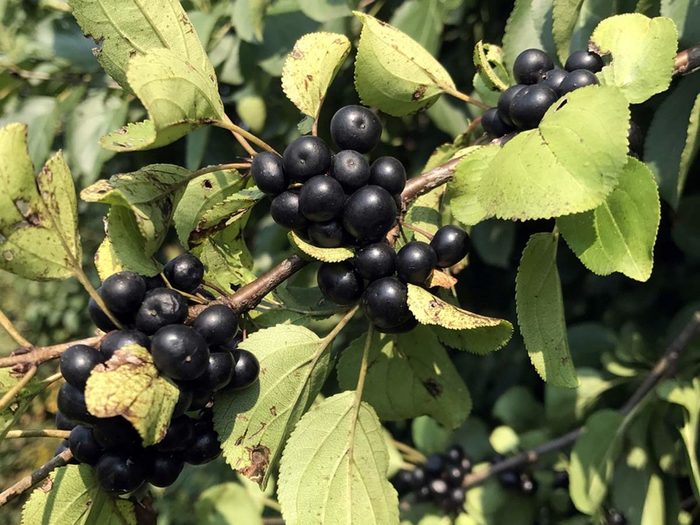
Buckthorn
Buckthorn (Rhamnus cathartica) is especially worrisome because it can out-compete native plants for nutrients, light and moisture. It was brought to the U.S. in the mid-1800s as hedging material but became invasive. There are no insects or disease that curb buckthorn’s growth and it can act as a host for crown rust fungus and soybean aphid. To remove buckthorn, start by removing plants that are producing fruit to reduce the number of seeds added to your yard each year. The plant can be removed with handtools and herbicides as well but treatment will take several years because it can remain in the soil for up to five years. One clever solution for buckthorn removal has been using goats. Goats will graze on buckthorn and reduce its impact. Speaking of goats, we love these goat cheese recipes!